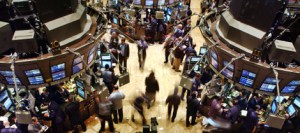
February 14, 2023 | Daily JAM, Morning Briefing |
On a year-over-year basis headline CPI inflation fell in January. Data released by the Bureau of Labor Statistics this morning, February 14, showed all-in prices rose 6.4% in January 2023 from January 2022. That was a slight drop from the 6.5% year-over-year rate measured in December. (Remember the inflation rate peaked at 9.1% in the summer of 2022.) But on a month-to-month basis, January prices rose 0.5% from December.

February 13, 2023 | Daily JAM, Morning Briefing |
The consensus is that the headline all-in year-over-year inflation rate will come in at 6.2% for January when the Bureau of Labor Statistics reports the numbers before the New York market open tomorrow February 14. That would be down from an annual 6.5% rate in DecemberGood news for investors and traders hoping that the Fed will end its current cycle of interest rate increase soon (June or July) and with a peak rate of 5.2% or less. The worry remains the month-to-month move in inflation with the consensus looking for a 0.4% increase in the CPI inflation rate in January from December.

February 11, 2023 | Uncategorized |
It’s CPI inflation report time again. On Tuesday morning the Bureau of Labor Statistics will report the Consumer Price Index for January. Expectations are for a mixed result with the annual rate continuing to fall from the 6.5% year-over-year headline rate in December for the CPI. But with inflation rising month-over-month for the first time in three months.

February 1, 2023 | Daily JAM |
The Federal Reserve raised short-term interest rates Wednesday by 25 basis points, as expected. That brings the Fed’s benchmark interest rate to a range of 4.50% to 4.75%, the highest level since October 2007. After a pullback on the news and the Fed’s press release, the stock market advanced because in his press conference Fed chair Jerome Powell didn’t strongly push back on questions suggesting that the Fed sees inflation continuing to fall and that the central bank is nearing a pause in its interest rate increases. If you’re familiar with the way that financial markets torture the Fed’s frequently opaque language to support the current consensus, you won’t be surprised that today’s move up on stocks is based on a very minor shift in the Fed’s language.

January 30, 2023 | Daily JAM, GDX, GDXJ, GLD, GOLD, Jubak Picks, Perfect Five-ETFs, Volatility |
With the Federal Reserve seemingly winding down its cycle of interest rate increases, a stronger dollar is no longer the big currency market story. Gold is. Gold is back. And for at least the next 3 to 6 months.

January 30, 2023 | Daily JAM, Morning Briefing |
Here’s what I expect on Wednesday. The Federal Reserve’s Open Market Committee will announce a 25 basis point interest rate increase. In his post-meeting press conference Fed chair Jerome Powell will try to talk the financial markets out of their exuberance by stressing that the Fed doesn’t see a quick end to interest rate increases because at 5% inflation is still running way ahead of the Fed’s 2% target rate. And I expect that investors and traders will ignore Powell’s comments and bid stocks high because a pause in rate increases is just around the corner–maybe as early as March–and financial markets can look for the Fed to begin cutting interest rates in the second half of the year. To which I say, Bushwah! I would sell any post-meeting rally. March increasingly looks like the month where reality will whack the markets on its head.

January 26, 2023 | Daily JAM |
Maybe the Federal Reserve will send a signal on Wednesday that it thinks inflation is under control. I do think the inflation rate will continue to fall. To the Fed’s 2% target? I’ve got my doubts. I think there are still a lot of price increases working their way through the system.

January 20, 2023 | Daily JAM, Morning Briefing |
This may seem perplexing: Alphabet (AKA Google) announced that it would cut 12,000 jobs just days after Microsoft (MSFT) said it would cut 10,000 jobs. And stocks, especially technology stocks, rallied. The Standard & Poor’s 500 closed up 1.89% today and the Dow Jones Industrial Average ended the day up an even 1.00%. The technology-heavy NASDAQ Composite finished up 2.66% and the NASDAQ 100 wound up climbing 2.86%. But remember that the economy doesn’t equal the stock market

January 12, 2023 | Daily JAM, Morning Briefing |
Inflation, measured by the headline CPI (Consumer Price Index) fell 0.1% in December versus November. That brought the annual headline inflation rate to 6.5%. That was exactly what a consensus of economists was looking for. The core DPI, which strips out more volatile food and energy prices, rose by 0.3% in December from November. That brought the annual core inflation rate to 5.7%. Again, exactly what economists had forecast. (Remember, the inflation rate peaked at 9.1% this summer.) The stock market didn’t know quite what to do with this inflation reading, however.

January 11, 2023 | Daily JAM, Morning Briefing |
Let’s be honest, everybody from the experts down to you at your home computer is flying blind right now. Trends are so event dependent that I’m not sure there actually is a trend that’s worth buying into for more than a day or two. This will all resolve itself one day–I’d estimate by the middle of 2023–but until then my advice is to NOT get caught up in any of the waves of conflicting short-term sentiment rolling through the market.
January 9, 2023 | Daily JAM |
Disappointing holiday sales and margin pressures. Not a good combination for any stock. And today shares of Macy’s (M), down 6.39% as of 2 p.m. New York time; Lululemon (LULU, down 9.01%, and Chico’s FAS (CHS) down 9.41% are paying the price for disappointing Wall Street.
December 30, 2022 | Daily JAM, Morning Briefing |
The big investing and economic question for 2023 is How hard will it be to push inflation to something near the Federal Reserve’s 2% target? The answer will determine (at least until rising unemployment gets the Fed to blink in the second half of 2023) how far and how fast the Federal Reserve will have to raise interest rates, how big a danger a true recession is, and how much of a slowdown we’ll see in economic growth and corporate profits? And the answers to those questions will largely determine the direction of the stock market in 2023. I’d like to offer two of my own observations from my personal Christmas shopping season free of charge to those economists who are now grappling with these questions. My personal experience says that inflation will be stickier than the consensus on Wall Street now believes. And that it will be very, very hard to push inflation back to the Fed’s target range without a true recession.










